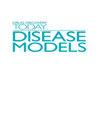非人类灵长类动物模型和体外肝期培养在疟疾药物开发中的替代作用
Q3 Pharmacology, Toxicology and Pharmaceutics
引用次数: 2
摘要
非人类灵长类动物(NHP)已被广泛用于鉴定新的抗疟疾化合物。特别是食胞疟原虫/恒河猴模型是间日疟原虫肝期和血期化合物评价的常用替代方法。如今,我们已经尽可能地用体外测定法取代了NHP的体内检测。本文综述了NHP的疟疾药物检测、体外模型的发展,特别是体外催眠虫试验,该试验可以检测化合物对休眠肝期寄生虫的活性。本文将讨论该模型的优点和局限性。本文章由计算机程序翻译,如有差异,请以英文原文为准。
Non-human primate models and in vitro liver stage cultures as alternatives in malaria drug development
Non-human primates (NHP) have been used extensively in the identification of new antimalarial compounds. Especially the Plasmodium cynomolgi/rhesus monkey model was a very popular substitute to evaluate compounds for P. vivax liver- and blood stages. Nowadays we have replaced, as much as possible, the NHP in vivo testing with in vitro assays. In this review, an overview is given on malaria drug testing in NHP, the development of the in vitro models and especially the in vitro hypnozoite assay, in which compounds can be tested for activity against dormant liver stage parasites. Benefits and limitations of this model will be discussed.
求助全文
通过发布文献求助,成功后即可免费获取论文全文。
去求助
来源期刊

Drug Discovery Today: Disease Models
Pharmacology, Toxicology and Pharmaceutics-Drug Discovery
自引率
0.00%
发文量
0
期刊介绍:
Drug Discovery Today: Disease Models discusses the non-human experimental models through which inference is drawn regarding the molecular aetiology and pathogenesis of human disease. It provides critical analysis and evaluation of which models can genuinely inform the research community about the direct process of human disease, those which may have value in basic toxicology, and those which are simply designed for effective expression and raw characterisation.
 求助内容:
求助内容: 应助结果提醒方式:
应助结果提醒方式:


